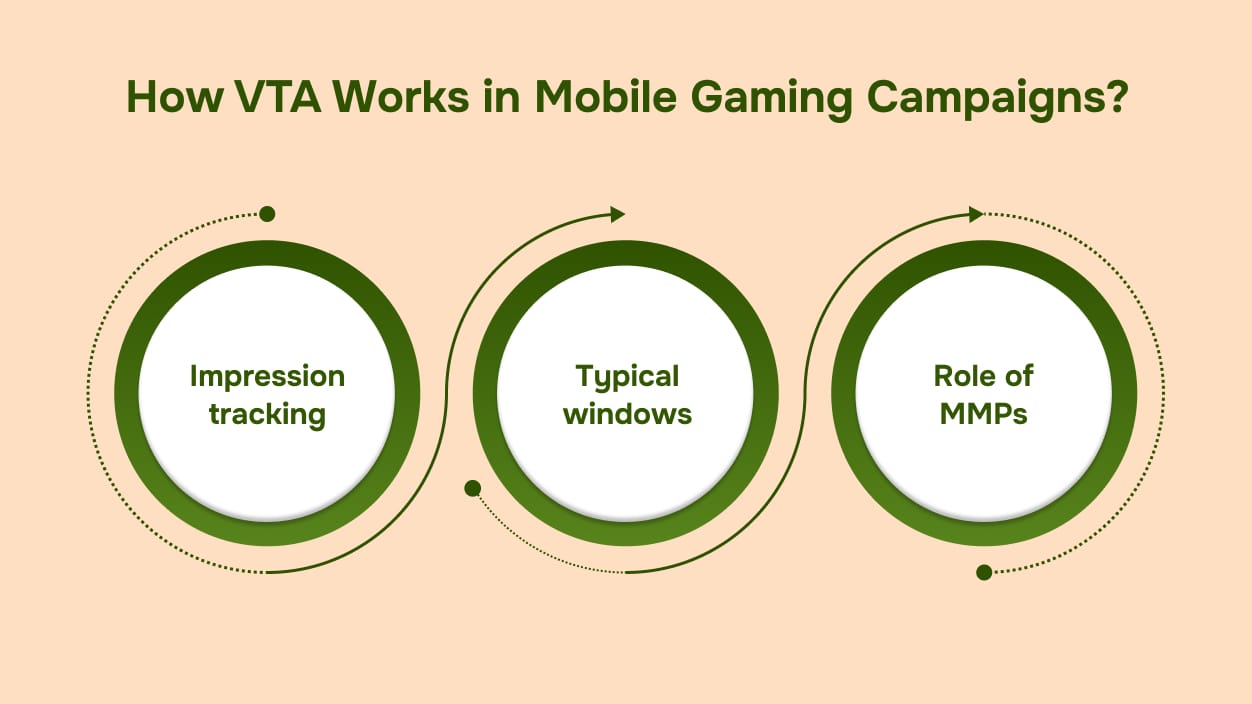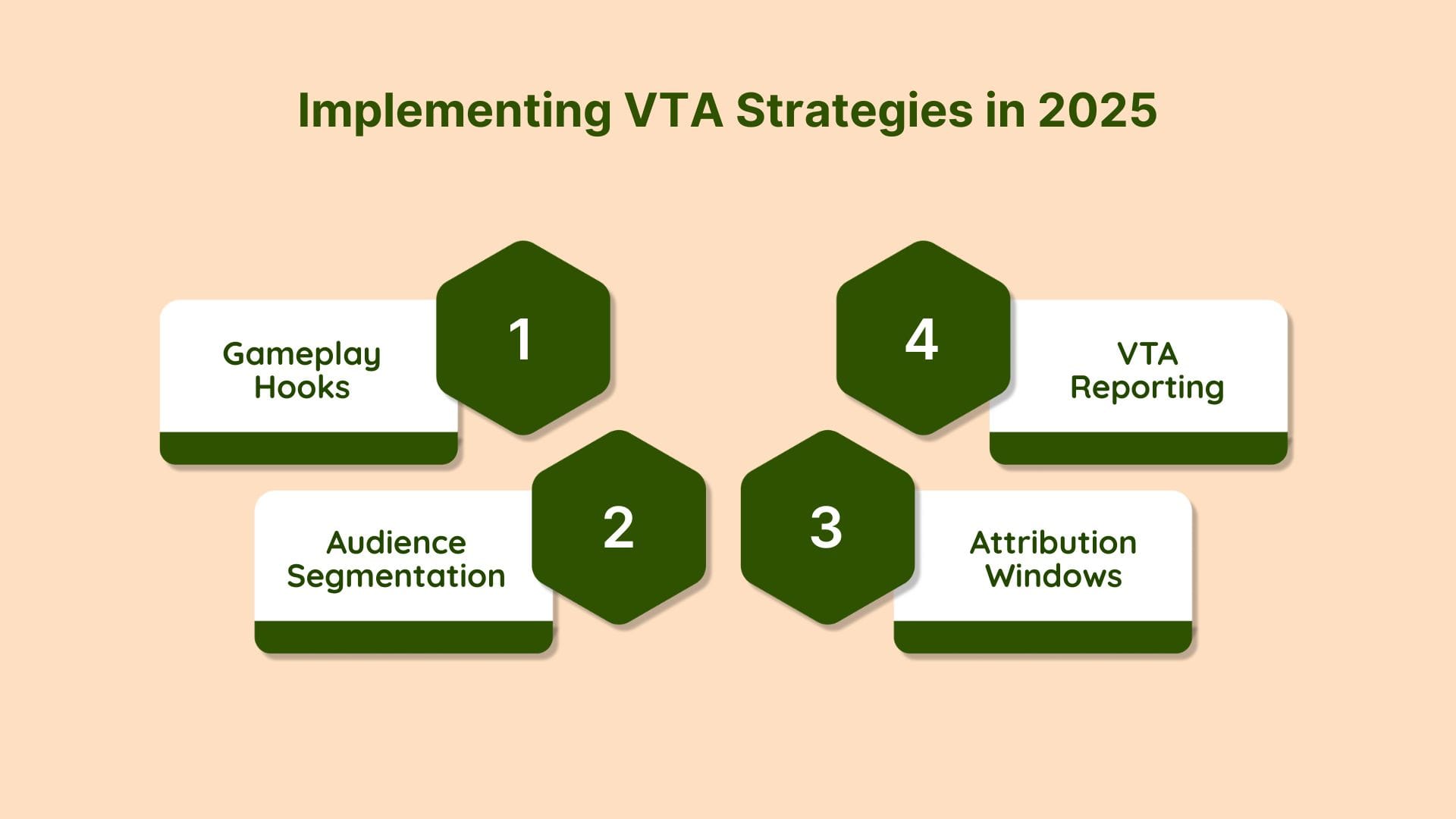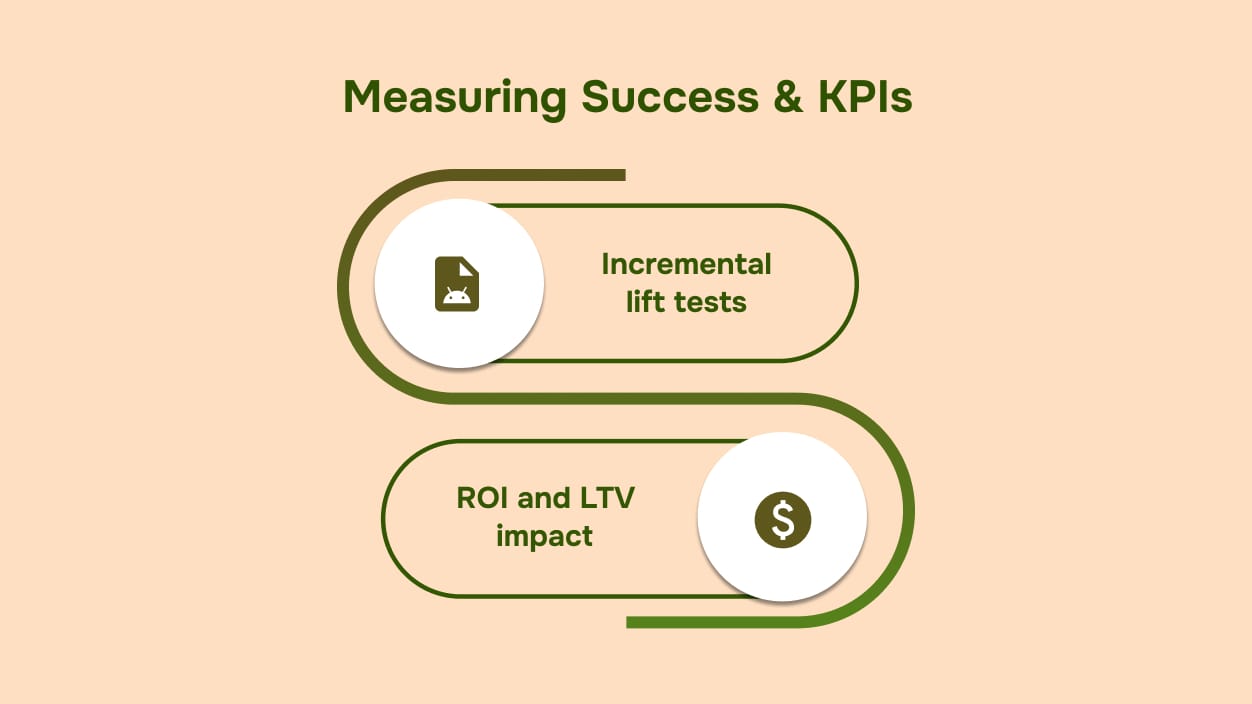Understanding View-Through Attribution and Its Importance
You’re investing heavily in mobile game ads, yet click-based tracking leaves blind spots. As gaming revenue tops $139 billion in 2024 and is projected to reach $256 billion by 2030, missing conversions means a wasted budget and skewed performance insights. We understand how frustrating it can be to invest significant resources into mobile game advertising only to feel uncertain about the actual impact due to limitations in traditional tracking methods.
Since Apple’s IDFA deprecation and the rollout of SKAdNetwork 4.0, click-only models systematically undercount installs and post-install events across non-SKAN channels. That gap can conceal the actual impact of your display, video, and rewarded ads, making it challenging to optimize campaigns and meet ROAS targets.
View‑through attribution captures those post‑view installs and actions you’d otherwise miss. By crediting impressions that lead to conversions, it complements your measurement and enables smarter bidding and budget allocation.
In this blog, you’ll learn how view‑through attribution tracks installs from ad views, why it matters, and get quick 2025 tips, common pitfalls, and must‑watch metrics.
What is View Through Attribution (VTA)?
View through attribution (VTA) credits installs or post‑install events to ad impressions rather than clicks, when a user views your ad and converts within your set lookback window. Most UA platforms allow you to configure a VTA lookback window, typically ranging from 1 hour to 24 hours (24 hours is the de facto standard in gaming), so any install or in-app event that occurs within that period is tied back to the impression, even if the user never clicked the creative.
Why does viewing through attribution matter?
Capture upper‑funnel value: You track installs driven by impressions that click‑through models miss. Many players watch a rewarded video or banner, close the ad, and then head straight to their app store later. Without VTA, you undercount installs from these high‑impact formats.
Optimize channel spend: By comparing view-through performance across various formats, including interstitial video, banners, playable ads, and networks. Then shift the budget to placements that truly drive installs.
Improve ROAS understanding: You combine VTA insights with spend data to fine‑tune bids on top networks. Integrating click‑through and view‑through models delivers 113% faster ad optimization and steadier auction costs, so you bid more confidently on high‑impact placements.
Now let’s take a closer look at how view-through attribution is applied in real mobile gaming campaigns, from impression tracking to fraud prevention.
How VTA Works in Mobile Gaming Campaigns?

To see how a simple impression can drive installs in your games, examine these steps:
1. Impression tracking
Unique impression IDs: Each time an ad is displayed, the SDK generates a random UUID for that view, ensuring every impression is unique. This allows your MMP to link each installation back to the exact ad view within your lookback window. (Note: some networks generate impression IDs server-side; confirm your MMP’s supported integration method.)
Data layer integration: Your SDK collects and transmits impression-level data, including timestamps, device IDs, and ad network IDs, to your MMP. This MMP then matches these tokens against install postbacks within the view-through window to accurately attribute installs to views.
2. Typical windows
24‑hour lookback: You set a one‑day window. It’s brief enough for gaming’s fast decisions but long enough to catch casual installs after seeing an ad.
Creative cadence impact: A shorter window means you must refresh creatives more frequently to avoid view saturation and maintain engagement within the 24 hours.
3. Role of MMPs
Cross‑network aggregation: Your Mobile Measurement Partners (MMP) ingests impression feeds from all ad networks. It creates a unified view dataset for reliable VTA reporting.
Deduplication & fraud filtering: MMPs apply layered deduplication, including timestamp grouping, device fingerprint matching, and SDK click deduplication, alongside fraud filtering using real-time rules and machine learning to prevent inflated counts from fake clicks, bots, hijacks, and injections. Only validated human events are included in VTA metrics, keeping your data accurate and reliable.
Once your setup is in place, here are some practical ways to utilize VTA effectively in 2025 and boost your campaign results.
Also Read: Understanding Mobile App Attribution
Implementing VTA Strategies in 2025

As player acquisition costs climb and attention spans shrink, focus on these view‑through tactics to boost engagement and re‑installs:
1. Short‑form gameplay hooks
Begin ads with 3–5 seconds of core gameplay. Meta reports a 25% higher VTA when gameplay appears within 1.5 seconds of the ad start. Use A/B tests in your ad platform to compare gameplay-first intros against other open ads. Prioritize the winning hook and refine pacing or framing to further boost VTA.
2. Granular audience segmentation
Segment lapsed players by spend tiers (whales, dolphins, minnows) or weekly play frequency. For example, target high‑spend whales with event‑based re‑engagement ads to capitalize on live‑ops drops. Tailor your creative and bids per segment: allocate higher bids for whales and cap frequency for non‑payers to prevent oversaturation.
3. Set bright attribution windows
Use a 24-hour view-through window for casual titles, as players typically make quick install decisions within this period, aligning with short-funnel purchase cycles and ensuring the accurate capture of impulse installs. For live ops events, extend your VTA window to seven days to account for extended engagement and FOMO-driven installs. Regularly audit your window settings against your game’s Average Revenue Per Daily Active User (ARPDAU) and session lengths to optimize attribution windows.
4. Multi‑channel VTA reporting
Incorporate Apple Search Ads’ new VTA option (launched March 27, 2025) alongside social and programmatic channels. Enable VTA in your MMP settings and merge view‑through data in your BI dashboard. Cross‑reference view‑through and click‑through metrics to uncover underreported channels and reallocate budget across Meta, TikTok, ASA, and programmatic DSPs.
A solid strategy can still fail if key mistakes are overlooked. Here are the best practices and common pitfalls to avoid when implementing VTA.
Also Read: Power of Creative Ads in Mobile Games & App Marketing
Best Practices & Pitfalls to Avoid
When you fine‑tune your VTA approach in mobile gaming:
Combine VTA with click-through attribution: Use both metrics side by side in your UA dashboard. Compare view‑through installs against click‑through installs to validate that impressions drive conversions. This dual view helps you avoid misinterpreting passive views as strong user intent.
Guard against fraud: Monitor view‑through events for patterns of rapid or bot‑generated impressions. Plug in a fraud‑prevention SDK that flags suspicious view events and blocks them before they skew your metrics.
Avoid over‑crediting: Keep your default VTA window at 24 hours, but override this only for specialized live-ops scenarios where evidence supports extended lookbacks. Windows longer than a day can inflate your VTA numbers without a real performance uplift. Align your window to industry standards to ensure fair and precise attribution.
By combining VTA with CTA, guarding against fraud, and avoiding over-crediting, you can enhance the accuracy and effectiveness of your mobile gaming user acquisition campaigns.
Tracking results is just as important as setting up campaigns. Let’s go over the key metrics that help prove your VTA impact.
Measuring Success & KPIs

These KPIs are crucial for assessing the effectiveness of your VTA strategy, ensuring optimal resource allocation, and confirming the long-term value of your ad spend. To measure your VTA performance, focus on these metrics:
Incremental lift tests: Run A/B or geo‑holdout experiments with a control group unexposed to your ads. Measure the difference in installation rate or spend between the test and control groups to isolate the actual VTA impact.
ROI and LTV impact: Track post‑install revenue and engagement over 30–45 days for gaming titles. Calculate ROI = ((revenue – cost) ÷ cost) × 100% and monitor LTV curves. High LTV lift from VTA‑attributed users validates budget allocation.
By measuring incremental lift and the impact on ROI/LTV, you can validate and refine your approach for sustained success.
Conclusion
By adding view‑through attribution to your toolkit, you’ll catch installs and in‑app actions that click‑only tracking misses. This extra insight reveals which ad formats are genuinely practical, allowing you to allocate your budget more efficiently from low-impact spots to those that drive real results.
To get started, turn on VTA in your measurement platform and select lookback windows that match how your game’s players make decisions. Then watch both view‑through and click‑through results side by side. When you spot strong view‑through channels, boost their bids or refresh the creative to keep results climbing.
In the end, view‑through attribution helps you spend smarter, prove the value of every impression, and drive more installs for the same budget.
Ready to close your measurement gaps and maximize ROI? Start your 14-day free trial with Segwise AI today.
FAQs
What is view‑through attribution? It’s a conversion tracking model that credits installs or in-app events to ad impressions when users convert after seeing an ad, even if they don't click on it, helping you capture upper-funnel impact.
How does view‑through attribution differ from click‑through attribution? Click-through attribution credits conversions to clicks within a set window, while VTA credits those same actions to impressions unless a click occurs first, providing visibility into non-click interactions.
What’s a typical view‑through attribution window? Most platforms default to a 24‑hour lookback for VTA (with options ranging from 1 hour up to 7 days), balancing prompt install behavior in gaming with enough time to catch passive views.
Which ad networks support view‑through attribution? Self-attributing networks (SANs), such as Facebook and Google, natively report VTA, and non-SANs can participate via server-to-server impression links provided by MMPs.
What are the common limitations of view‑through attribution? VTA can over‑credit low‑intent impressions if windows aren’t tuned correctly, and it’s more susceptible to fraudulent view‑based traffic compared to click models.

Comments
Your comment has been submitted successfully!